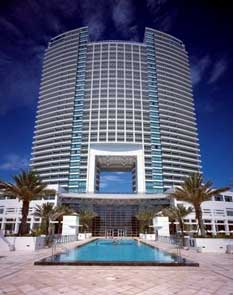Jun 6 2008
With the Atlantic hurricane season starting June 1, builders are increasingly relying on silicone glazed impact-resistant glass and silicone waterproofing sealants to protect property from sustained winds and pounding rains.

“Hurricane-prone areas require the best weatherproofing and glazing products available to protect building structures and prevent leaks,” said Larry Carbary, Associate Industry Scientist, Dow Corning Corporation. “Silicone weatherproofing, glazing and impact resistant sealants are the preferred solution because they provide more building protection and are proven to decrease structural damage and water infiltration under high wind speeds and pressures compared to other materials.”
Structural silicone sealants are important in the effort to protect buildings from extreme weather events such as hurricanes because they strengthen building façades and windows, helping them withstand extreme temperature fluctuations, gale-force winds, acid rain, ultraviolet radiation, thunderstorms and even earthquake tremors. Silicones are strong but also flexible, allowing for the wide range of unique building designs characteristic of modern architecture.
Hurricane-prone regions of the United States have had great success using silicone sealants in the past to meet tougher building code requirements.
“The combination of structural strength and flexibility in the sealant is a key to meeting the impact-resistant glazing standards,” said Mark Baker, president of IBA Consultants, who has tested silicone sealants against other glazing materials in the construction of the Westin Diplomat Hotel in Florida. “While several other material types could deliver the strength to withstand the test’s initial impact requirement, I’m not aware of any sealant other than silicone that also provides the flexibility to hold up under the 9000-cycle wind load testing that follows.”